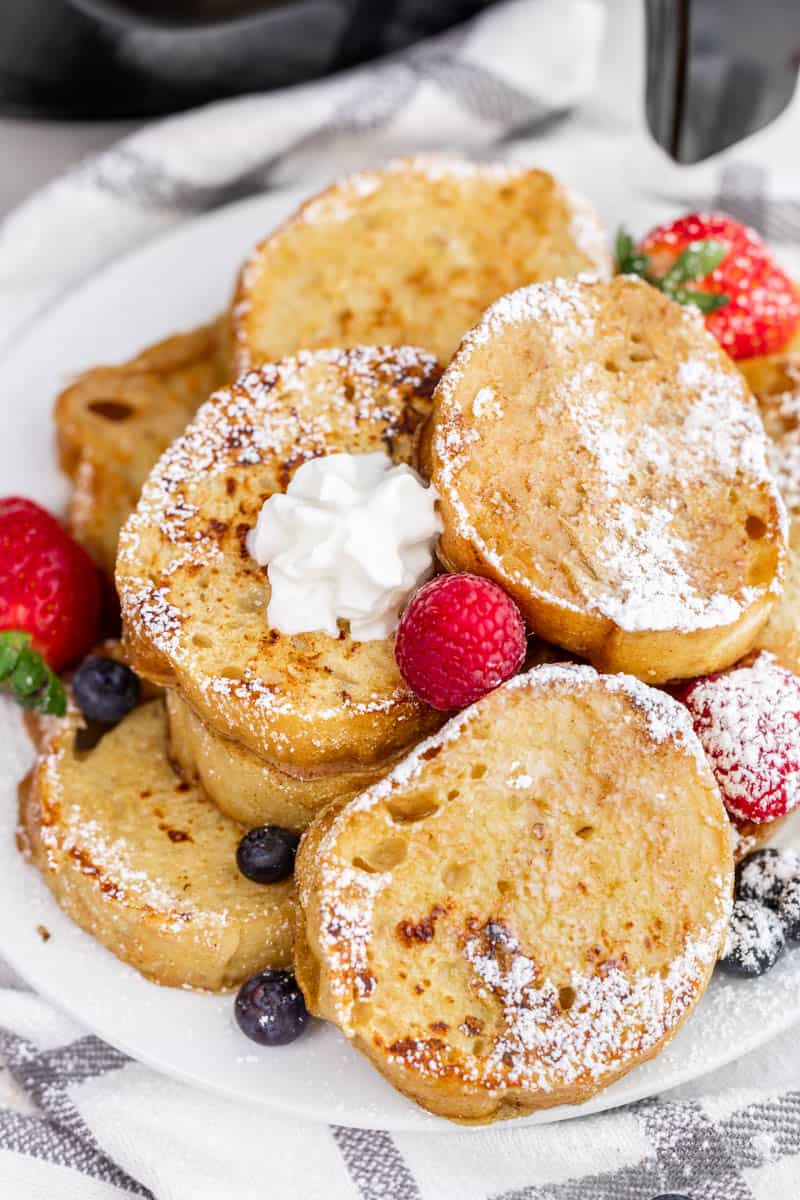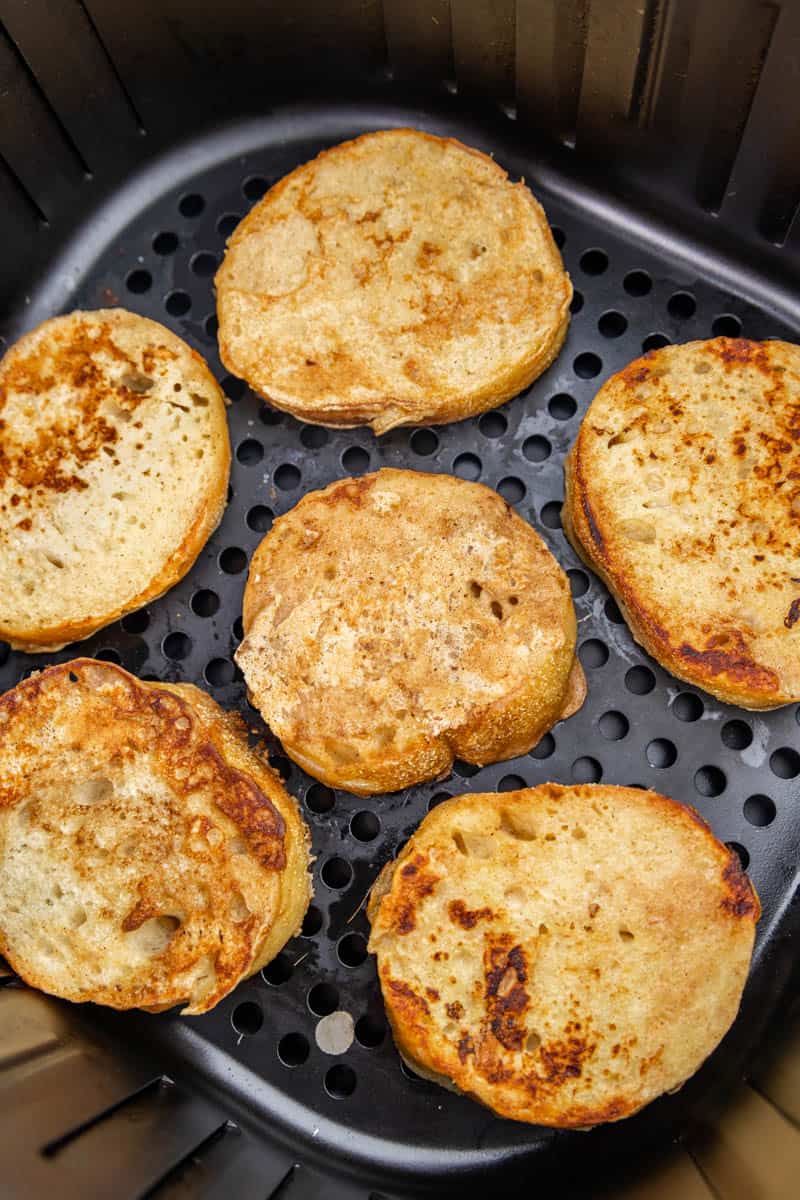Air Fryer French Toast

Craving a quick and simple, yet delightful breakfast? Let air fryer french toast be your new morning favorite.
Who doesn’t cherish the comforting allure of french toast? A breakfast staple for many, this dish harmoniously balances soft custard-soaked bread with a golden, crispy exterior. By harnessing the power of the air fryer, this rendition of french toast promises a consistency that’s hard to achieve on a stovetop. Plus, the efficiency and even heating of an air fryer mean less time cooking and more time enjoying.
Frequently Asked Questions
While most bread types can be used, thicker slices like brioche or challah are recommended for better absorption and texture.
While an air fryer achieves a unique texture, you can use a stovetop or oven.
Absolutely! Follow the freezing and reheating guidelines provided below.
Choosing the Right Bread
The foundation of any good french toast lies in the bread. While most types can be used, some varieties stand out:
- Brioche: This rich and tender bread is a favorite for many due to its buttery flavor.
- Challah: Another excellent option, Challah offers a slightly sweet taste and absorbs the egg mixture well.
- French Baguette: For those who enjoy a crispier edge, a stale French baguette can be ideal. Remember, the key is to use slightly stale bread, as fresh bread can become too soggy when soaked.
Alternative Cooking Methods
Don’t have an air fryer? No problem! There are traditional alternatives:
- Stovetop: Heat a non-stick skillet over medium heat, adding a bit of butter. Once hot, add your soaked bread slices, cooking each side for 2-4 minutes until golden.
- Oven: Preheat your oven to 375 degrees Fahrenheit. Place the soaked bread on a baking sheet and bake for around 20 minutes, flipping halfway through.
Substitutions
Whether you’re accommodating personal preferences or dietary restrictions, several ingredient swaps can come in handy:
- Milk: Almond milk, soy milk, or oat milk can be suitable dairy-free alternatives.
- Eggs: A commercial liquid egg alternative or flaxseed ‘egg’ can work as a binder for those seeking a more plant-based version.
- Brown Sugar: Maple syrup, agave nectar, or coconut sugar can replace traditional brown sugar.
Troubleshooting
Embarking on your french toast journey, you might encounter a few bumps. Here’s how to navigate them:
- Soggy Center: If your french toast has a soggy middle, it’s likely soaked for too long. A quick dip is all that’s needed.
- Uneven Browning: Overcrowding the air fryer or skillet can lead to uneven cooking. Give each slice ample space.
- Too Dry: If your bread is too dry after cooking, it might not have absorbed enough of the egg mixture. Ensure thorough soaking next time.
Tips From the Chef
- For even soaking, leave the bread slices in the mixture for a couple of seconds without oversaturating.
- Preheat the air fryer adequately to ensure consistent cooking.
- Don’t overcrowd the air fryer basket; leave space between slices for even crisping.
- Adjust cooking times based on the thickness of your bread slices.

Storage, Freezer, & Reheating Instructions
After savoring your delightful breakfast, you may find yourself with leftovers. To freeze, let the french toast cool thoroughly on a wire rack. Then, line them on a parchment paper-covered baking sheet, ensuring parchment separates stacked slices. Once frozen solid, transfer to a resealable plastic freezer bag.
When you’re ready to reheat, simply air fry for 1-2 minutes at 350 degrees Fahrenheit.
Make a Complete Breakfast with…
